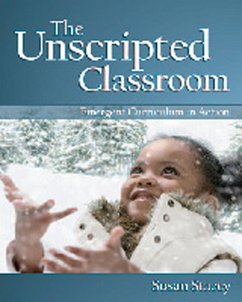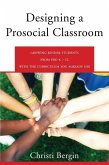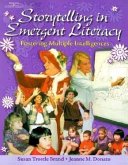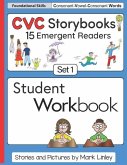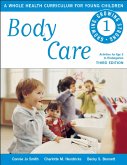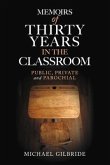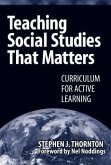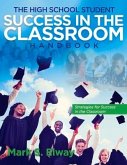Susan Stacey
The Unscripted Classroom: Emergent Curriculum in Action
28,99 €
inkl. MwSt.
Versandfertig in über 4 Wochen

14 °P sammeln
Susan Stacey
The Unscripted Classroom: Emergent Curriculum in Action
- Broschiertes Buch
- Merkliste
- Auf die Merkliste
- Bewerten Bewerten
- Teilen
- Produkt teilen
- Produkterinnerung
- Produkterinnerung
Inspires early childhood educators to use innovative practices through stories from real teachers who use emergent curriculum in their classrooms.
Andere Kunden interessierten sich auch für
![Designing a Prosocial Classroom: Fostering Collaboration in Students from Prek-12 with the Curriculum You Already Use Designing a Prosocial Classroom: Fostering Collaboration in Students from Prek-12 with the Curriculum You Already Use]() Christi BerginDesigning a Prosocial Classroom: Fostering Collaboration in Students from Prek-12 with the Curriculum You Already Use25,99 €
Christi BerginDesigning a Prosocial Classroom: Fostering Collaboration in Students from Prek-12 with the Curriculum You Already Use25,99 €![Storytelling in Emergent Literacy: Fostering Multiple Intelligence Storytelling in Emergent Literacy: Fostering Multiple Intelligence]() Susan Louise TrostleStorytelling in Emergent Literacy: Fostering Multiple Intelligence95,99 €
Susan Louise TrostleStorytelling in Emergent Literacy: Fostering Multiple Intelligence95,99 €![CVC Storybooks SET 1 Student Workbook: 15 Emergent Readers with Spelling Practice CVC Storybooks SET 1 Student Workbook: 15 Emergent Readers with Spelling Practice]() Mark LinleyCVC Storybooks SET 1 Student Workbook: 15 Emergent Readers with Spelling Practice13,99 €
Mark LinleyCVC Storybooks SET 1 Student Workbook: 15 Emergent Readers with Spelling Practice13,99 €![Body Care Body Care]() Connie Jo SmithBody Care15,99 €
Connie Jo SmithBody Care15,99 €![Memoirs of Thirty Years in the Classroom: Public, Private and Parochial Memoirs of Thirty Years in the Classroom: Public, Private and Parochial]() Michael GilbrideMemoirs of Thirty Years in the Classroom: Public, Private and Parochial19,99 €
Michael GilbrideMemoirs of Thirty Years in the Classroom: Public, Private and Parochial19,99 €![Teaching Social Studies That Matters: Curriculum for Active Learning Teaching Social Studies That Matters: Curriculum for Active Learning]() Stephen ThorntonTeaching Social Studies That Matters: Curriculum for Active Learning27,99 €
Stephen ThorntonTeaching Social Studies That Matters: Curriculum for Active Learning27,99 €![The High School Student Success in the Classroom: Strategies for Success in the Classroom Volume 1 The High School Student Success in the Classroom: Strategies for Success in the Classroom Volume 1]() Mark ElwayThe High School Student Success in the Classroom: Strategies for Success in the Classroom Volume 116,99 €
Mark ElwayThe High School Student Success in the Classroom: Strategies for Success in the Classroom Volume 116,99 €-
-
-
Inspires early childhood educators to use innovative practices through stories from real teachers who use emergent curriculum in their classrooms.
Produktdetails
- Produktdetails
- Verlag: Redleaf Press
- Seitenzahl: 137
- Erscheinungstermin: Mai 2011
- Englisch
- Abmessung: 249mm x 203mm x 10mm
- Gewicht: 318g
- ISBN-13: 9781605540368
- ISBN-10: 1605540366
- Artikelnr.: 32424191
- Herstellerkennzeichnung
- Libri GmbH
- Europaallee 1
- 36244 Bad Hersfeld
- gpsr@libri.de
- Verlag: Redleaf Press
- Seitenzahl: 137
- Erscheinungstermin: Mai 2011
- Englisch
- Abmessung: 249mm x 203mm x 10mm
- Gewicht: 318g
- ISBN-13: 9781605540368
- ISBN-10: 1605540366
- Artikelnr.: 32424191
- Herstellerkennzeichnung
- Libri GmbH
- Europaallee 1
- 36244 Bad Hersfeld
- gpsr@libri.de
Susan Stacey: Susan Stacy is an early childhood consultant and teacher educator with more than thirty years of experience. Most of her experience has been in lab schools, where she has worked with children, educated teachers and student teachers, and conducted research. She presents frequently on emergent curriculum, observation, and documentation.
Introduction
Learning from Stories
How This Book Works
Introducing Naomi
Chapter 1: Revisiting Emergent Curriculum
Misunderstandings and Questions
Observation...and more: The E-mail Project
Decision-making in Emergent Curriculum
Groups and Time Frames
Continuing the Cycle
Further Reading
Chapter 2: Creative Thinking in Emergent Curriculum
Creative Teaching
The Value of Dialogue
A Director's Contribution
The Physical Environment: The Classroom as a Workshop for Ideas
Multiple Languages for Representing Ideas
Opening the Mind to Creative Thinking
ZiHao and the Skeletons: A Conversation with a Child
Acting upon Our Imagination
Further Reading
Chapter 3: Using Stories as a Means of Professional Development
Stories from London Bridge
Adults Sharing Their Work
Further Reading
Chapter 4: Taking Time to Make Lemonade
Stories from the Children's School at Pacific Oaks College: The Lemonade
Sale
Teachers' Reflections Lead to Use of Natural Materials in the Classroom
Examining Old Practices
Further Reading
Chapter 5: Embracing the Unexpected: Explosions (and Penguins!)
Susan's Story: Thinking about Explosions
Michelle's Story: Something Unexpected
Reflecting upon Children's Agendas of Power and Strength
Further Reading
Chapter 6: The Flexibility of Routines, Responses, and Teacher's Roles
Introducing Stepping Stones
Liz's Stories: The Transition Teacher and Volcanoes
A Culture of Creativity: Tea and Stories
Further Reading
Chapter 7: Emergent Curriculum with Toddlers
Toddlers and Extraordinary Moments
Andrea's Story: Taking the Classroom Outdoors
Shannon's Story: Connecting Toddlers with Their Parents at Work
Further Reading
Chapter 8: The Challenge of Documenting Emergent Curriculum
Organized, Tidy, and Never Used
Linking Observations to Curriculum
Showing the Curriculum Over the Long Term: The Curriculum Path
Brainstorming with a Web
Documentation: The Story of What Happened
Further Reading
Chapter 9: Supporting the Process: The Role of Teacher Education Programs
and Administrators
Hope's Story: Facilitating 'Loosening Up'
Lori's Story: Program Coordinator as Provocateur
The Nature of Teacher Education: Taking Ms. Moffat Away
Karyn's Story: Teacher Education with a Difference
A Bridge to Learning: Children and Student Teachers Learn Together
Further Reading
Chapter 10: Taking the Leap: The Unscripted Path
Tracing the Path of an Emergent Project: Transparency
Postscript
Conclusion
Learning from Stories
How This Book Works
Introducing Naomi
Chapter 1: Revisiting Emergent Curriculum
Misunderstandings and Questions
Observation...and more: The E-mail Project
Decision-making in Emergent Curriculum
Groups and Time Frames
Continuing the Cycle
Further Reading
Chapter 2: Creative Thinking in Emergent Curriculum
Creative Teaching
The Value of Dialogue
A Director's Contribution
The Physical Environment: The Classroom as a Workshop for Ideas
Multiple Languages for Representing Ideas
Opening the Mind to Creative Thinking
ZiHao and the Skeletons: A Conversation with a Child
Acting upon Our Imagination
Further Reading
Chapter 3: Using Stories as a Means of Professional Development
Stories from London Bridge
Adults Sharing Their Work
Further Reading
Chapter 4: Taking Time to Make Lemonade
Stories from the Children's School at Pacific Oaks College: The Lemonade
Sale
Teachers' Reflections Lead to Use of Natural Materials in the Classroom
Examining Old Practices
Further Reading
Chapter 5: Embracing the Unexpected: Explosions (and Penguins!)
Susan's Story: Thinking about Explosions
Michelle's Story: Something Unexpected
Reflecting upon Children's Agendas of Power and Strength
Further Reading
Chapter 6: The Flexibility of Routines, Responses, and Teacher's Roles
Introducing Stepping Stones
Liz's Stories: The Transition Teacher and Volcanoes
A Culture of Creativity: Tea and Stories
Further Reading
Chapter 7: Emergent Curriculum with Toddlers
Toddlers and Extraordinary Moments
Andrea's Story: Taking the Classroom Outdoors
Shannon's Story: Connecting Toddlers with Their Parents at Work
Further Reading
Chapter 8: The Challenge of Documenting Emergent Curriculum
Organized, Tidy, and Never Used
Linking Observations to Curriculum
Showing the Curriculum Over the Long Term: The Curriculum Path
Brainstorming with a Web
Documentation: The Story of What Happened
Further Reading
Chapter 9: Supporting the Process: The Role of Teacher Education Programs
and Administrators
Hope's Story: Facilitating 'Loosening Up'
Lori's Story: Program Coordinator as Provocateur
The Nature of Teacher Education: Taking Ms. Moffat Away
Karyn's Story: Teacher Education with a Difference
A Bridge to Learning: Children and Student Teachers Learn Together
Further Reading
Chapter 10: Taking the Leap: The Unscripted Path
Tracing the Path of an Emergent Project: Transparency
Postscript
Conclusion
Introduction
Learning from Stories
How This Book Works
Introducing Naomi
Chapter 1: Revisiting Emergent Curriculum
Misunderstandings and Questions
Observation...and more: The E-mail Project
Decision-making in Emergent Curriculum
Groups and Time Frames
Continuing the Cycle
Further Reading
Chapter 2: Creative Thinking in Emergent Curriculum
Creative Teaching
The Value of Dialogue
A Director's Contribution
The Physical Environment: The Classroom as a Workshop for Ideas
Multiple Languages for Representing Ideas
Opening the Mind to Creative Thinking
ZiHao and the Skeletons: A Conversation with a Child
Acting upon Our Imagination
Further Reading
Chapter 3: Using Stories as a Means of Professional Development
Stories from London Bridge
Adults Sharing Their Work
Further Reading
Chapter 4: Taking Time to Make Lemonade
Stories from the Children's School at Pacific Oaks College: The Lemonade
Sale
Teachers' Reflections Lead to Use of Natural Materials in the Classroom
Examining Old Practices
Further Reading
Chapter 5: Embracing the Unexpected: Explosions (and Penguins!)
Susan's Story: Thinking about Explosions
Michelle's Story: Something Unexpected
Reflecting upon Children's Agendas of Power and Strength
Further Reading
Chapter 6: The Flexibility of Routines, Responses, and Teacher's Roles
Introducing Stepping Stones
Liz's Stories: The Transition Teacher and Volcanoes
A Culture of Creativity: Tea and Stories
Further Reading
Chapter 7: Emergent Curriculum with Toddlers
Toddlers and Extraordinary Moments
Andrea's Story: Taking the Classroom Outdoors
Shannon's Story: Connecting Toddlers with Their Parents at Work
Further Reading
Chapter 8: The Challenge of Documenting Emergent Curriculum
Organized, Tidy, and Never Used
Linking Observations to Curriculum
Showing the Curriculum Over the Long Term: The Curriculum Path
Brainstorming with a Web
Documentation: The Story of What Happened
Further Reading
Chapter 9: Supporting the Process: The Role of Teacher Education Programs
and Administrators
Hope's Story: Facilitating 'Loosening Up'
Lori's Story: Program Coordinator as Provocateur
The Nature of Teacher Education: Taking Ms. Moffat Away
Karyn's Story: Teacher Education with a Difference
A Bridge to Learning: Children and Student Teachers Learn Together
Further Reading
Chapter 10: Taking the Leap: The Unscripted Path
Tracing the Path of an Emergent Project: Transparency
Postscript
Conclusion
Learning from Stories
How This Book Works
Introducing Naomi
Chapter 1: Revisiting Emergent Curriculum
Misunderstandings and Questions
Observation...and more: The E-mail Project
Decision-making in Emergent Curriculum
Groups and Time Frames
Continuing the Cycle
Further Reading
Chapter 2: Creative Thinking in Emergent Curriculum
Creative Teaching
The Value of Dialogue
A Director's Contribution
The Physical Environment: The Classroom as a Workshop for Ideas
Multiple Languages for Representing Ideas
Opening the Mind to Creative Thinking
ZiHao and the Skeletons: A Conversation with a Child
Acting upon Our Imagination
Further Reading
Chapter 3: Using Stories as a Means of Professional Development
Stories from London Bridge
Adults Sharing Their Work
Further Reading
Chapter 4: Taking Time to Make Lemonade
Stories from the Children's School at Pacific Oaks College: The Lemonade
Sale
Teachers' Reflections Lead to Use of Natural Materials in the Classroom
Examining Old Practices
Further Reading
Chapter 5: Embracing the Unexpected: Explosions (and Penguins!)
Susan's Story: Thinking about Explosions
Michelle's Story: Something Unexpected
Reflecting upon Children's Agendas of Power and Strength
Further Reading
Chapter 6: The Flexibility of Routines, Responses, and Teacher's Roles
Introducing Stepping Stones
Liz's Stories: The Transition Teacher and Volcanoes
A Culture of Creativity: Tea and Stories
Further Reading
Chapter 7: Emergent Curriculum with Toddlers
Toddlers and Extraordinary Moments
Andrea's Story: Taking the Classroom Outdoors
Shannon's Story: Connecting Toddlers with Their Parents at Work
Further Reading
Chapter 8: The Challenge of Documenting Emergent Curriculum
Organized, Tidy, and Never Used
Linking Observations to Curriculum
Showing the Curriculum Over the Long Term: The Curriculum Path
Brainstorming with a Web
Documentation: The Story of What Happened
Further Reading
Chapter 9: Supporting the Process: The Role of Teacher Education Programs
and Administrators
Hope's Story: Facilitating 'Loosening Up'
Lori's Story: Program Coordinator as Provocateur
The Nature of Teacher Education: Taking Ms. Moffat Away
Karyn's Story: Teacher Education with a Difference
A Bridge to Learning: Children and Student Teachers Learn Together
Further Reading
Chapter 10: Taking the Leap: The Unscripted Path
Tracing the Path of an Emergent Project: Transparency
Postscript
Conclusion
